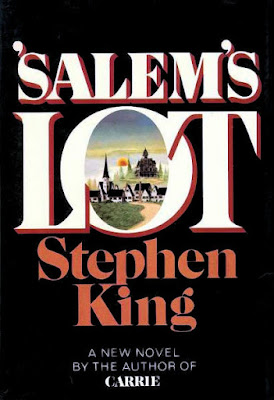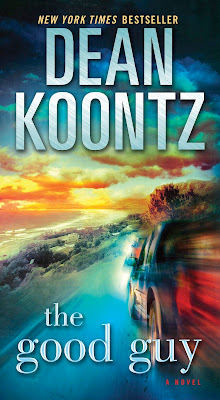Copyright 2018 by Gary L.Pullman
Jib Fowles helped
thousands of people better understand how advertisements, print and
otherwise, manipulate viewers using fifteen basic appeals to various
desires, emotions, and needs. He characterized five of these needs as
“needs to,” eight others are “needs for.” Generally speaking,
people can satisfy “needs to” on their own, but they require the
participation or, at least, the presence of others to fulfill “needs
for.”
Fowles identifies these
“needs to”:
The
need to aggress.
The
need to escape.
The
need to feel safe.
The
need to nurture.
The
need to satisfy curiosity.
The “needs for” are:
The
need for aesthetic sensations.
The
need for affiliation.
The
need for attention.
The
need for autonomy.
The
need to dominate.
The
need for guidance.
The
need for prominence.
The
need for sex.
The fifteenth basic need
is a group, the physiological needs, which include the needs for
food, drink, sleep, and so forth.
His essay explains in
detail each of these needs and provides several examples of each type
of appeal advertisements make in promoting their products.
The same fifteen
basic needs make horror novels, short stories, and movies
appealing to their readers and viewers. Let's take a look at these
needs, in regard to horror novels and movies, in the same order in
which Fowles himself discusses these needs in relation to the appeal
of advertisements, as we cut back and forth between the two analyses.
* * *
1.
The Need for Sex
Only
a small percentage of ads appeal to sex, because such an appeal can
overwhelm the product being advertised. As Fowles says, “it is too
blaring and tends to obliterate product information. Nudity in
advertising has the effect of reducing brand recall.” In other
words, sex and nudity are distracting, and they are more memorable
than the product they supposedly promote.
Whether
or not an ad containing nudity or sexual imagery actually evokes the
need for sex depends on the context of the nudity or sexual images.
Such an ad in Playboy
magazine, aimed at men, may be an appeal to the need for sex, but one
featuring a scantily dressed young woman and aimed at other young
women is more likely an appeal to the need for attention.
2.
The Need for Affiliation
The
need for affiliation is the need to belong, to be part of a group. In
a positive approach, such ads often show a person surrounded by
friends or family members whose affection and loyalty are valued. Ads
may also appeal to the need for affiliation by taking a negative
approach and showing it as absent or as threatened” “If we don't
use Scope, we'll have the 'Ugh!' Morning Breath' that causes the male
and female models [in the ad] to avert their faces [from one
another].” Ads also show the solutions to such problems—the
products featured in the ads.
There
are “several types of affiliation”: romance, courtship (dating),
family togetherness, and friendship. The AT&T telephone ad that
encouraged people to “reach out and touch someone” appeals to the
need for affiliation.
3.
The Need to Nurture.
The
need to nurture is the need “to take care of small, defenseless
creatures,” such as children and pets. Taking care of children and
pets can involve feeding, helping, supporting, consoling, protecting,
comforting, nursing, healing, and guiding them. Both men and women
have the need to nurture.
4.
The Need for Guidance
The
need for guidance is the opposite of the need to nurture. These
pitches are made by celebrities; fantasy figures (the Green Giant,
Betty Crocker, Mr. Goodwrench); authority figures, real and imagined
(“When E. F. Hutton talks, people listen”); or icons of
“tradition or custom” or of “American history.” Kool-Aid
appeals to the need for guidance through tradition, stating, “You
loved it [Kool-Aid] as a kid. You trust it as a mother.”
5.
The Need to Aggress
Everyone
has the need to behave aggressively, to aggress. Ads that appeal to
this need must be careful, in doing so, not to alienate consumers so
that they do not turn “public opinion . . . against what is being
sold.” Jack-in-the-Box offended customers by destroying the
company's mascot, the Jack-in-the-box, until the violence was “toned
down.”
6.
The Need to Achieve
Ads
that appeal to this need evoke the need to excel, to “accomplish
something difficult” by overcoming “obstacles . . . . surpass
others,” and “attain a high standard.” Athletes are often
featured in such ads. However, ads may create their own “role
models,” as Dewar's Scotch ads do in their profiles of successful
people.
Ads
based on the need to achieve often use superlatives: “best,”
first,” “finest,” to suggest the “need to succeed.” Ads for
sales and bargains also belong in this category, because they suggest
that one has seized “an opportunity” and come “out ahead of
others.”
7.
The Need to Dominate
Fowles
sees the need to dominate as a “craving to be powerful—perhaps
omnipotent.” This need, he suggests, can be associated with “the
need to . . . control one's environment' and a desire for “clout.”
Like
the other needs, this one is universal, as applicable to women as it
is to men.
8.
The Need for Prominence.
This
need, says Fowles, is related to “the
need to be admired and respected, to enjoy prestige and high social
status.” Wealth does not have to symbolize prominence, as Fowles
points out by referencing the American Express advertisement, in
which 'we learn that the prominent person is not so prominent without
his American Express card.”
9.
The Need for Attention.
Distinguishing the need for attention form
the need for prominence, Fowles points out that the former concerns
the need to be “looked up to”; the latter, to “the need to be
looked at.” he cites a Brooke Shields advertisement in which the
actress wears Calvin Klein jeans not so that men will pursue her, but
so that she will stand out from other young women.
10. The Need for Autonomy
We
tend to want to do things our own way, to be independent and to set
our own tasks, according to our own agendas. “ The
focus here is upon the independence and integrity of the individual,”
Fowles says, and it is opposite to the need for guidance.
11.
The Need to Escape.
“Escape”
can be actual, literal escape or to figuratively and emotionally
escape from the responsibilities and routines of everyday life. The
latter type of escape is motivated by a search for pleasure and the
freedom to do as we please. The need to escape can include other
people besides oneself; a group can escape together as easily as a
solitary individual.
12.
The Need to Feel Safe
It's
only natural to want to feel safe, and advertisements can appeal to
this need directly, by showing models who are safe, or indirectly, by
showing models who are in danger, because, even when we're at risk,
we feel the need to be safe. Product durability often plays upon this
need, as do references to natural ingredients.
13.
The Need for Aesthetic Sensations.
“Aesthetic”
refers to persons, places, or things that are beautiful or otherwise
bring pleasure. Everyone has a need to see, hear, smell, taste, or
touch beautiful objects, visit beautiful places, meet beautiful
people, and dine on delicious food. Anything that satisfies the need
for aesthetic sensations can be used to make this type of appeal.
14.
The Need to Satisfy Curiosity.
This
need involves “a need for information” and addresses people's
natural sense of curiosity. In advertisements, Fowles says, “
Trivia, percentages, observations counter to conventional wisdom . .
. all help [to] sell products,” and “any advertisement in a
question-and-answer format is strumming this need.”
15.
Physiological Needs.
Physiological
needs are the needs of the body: food, drink, and sleep, among them.
Many food advertisements make this basic appeal.
Styles
Fowles
also identifies three “styles” that many advertisements employ to
influence “the way a basic appeal is presented”: humor, celebrity
endorsements, and “time imagery.”
Although
humor can backfire, overwhelming the advertisement's message or
offending people, “softer appeals” using a humorous approach can
be effective.
Celebrity
endorsements can backfire when celebrities behave obnoxiously or
offend people, but this approach can work well; it allows famous men
and women to “introduce” a sponsor's product, using one or more
of the basic appeals, such as the need for guidance, the need to
achieve, the need for aesthetic sensations, the need for affiliation,
and the need to escape.
Time
imagery can supply advertisers with historical heroes, traditions,
and artwork, appealing to such needs as those for achievement,
guidance, aesthetic sensations, affiliation, and escape. Nostalgia,
the fond remembrance of times past, is an example of a time imagery
approach.
*
* *
How
does Fowles's analysis pertain to horror fiction? We offer examples
in upcoming posts.

































